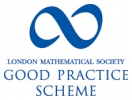British Mathematicians during WW1

This is from the Hooke family archive and is copyright free
Aeronautical engineering is an accepted and well-recognized discipline in the modern era. Many of the pioneers of the field were British mathematicians who not only plied their trade on the ground but also took to the air to conduct vital experiments that drove forward our understanding of the forces at play on an aircraft in flight. World War I was a catalyst that accelerated advances in aeronautics, progress that was underpinned by the efforts of mathematicians working at facilities and institutions across the country. The Royal Aircraft Factory, the National Physical Laboratory, and the Admiralty in London, were all key centres of activity, as were some of the country’s universities. The frantic race for knowledge also opened up opportunities for woman mathematicians to demonstrate their talents and establish footholds in the previously male-dominated realm of engineering.
A number of those at the heart of this story gave their lives in pursuit of knowledge before they were able to establish their careers – David H. Pinsent (1891-1918), was one. Others went on to greater things in different areas of science or mathematics for which they are now better remembered – Nobel laureate in physics, George P. Thomson (1892-1975), for example. Some simply returned to engaging in their true mathematical interests, Hilda Hudson (1881-1965) being typical. A handful, including William Farren (1892-1970), continued working in aeronautics and formed the backbone of the pursuit in Britain for many decades to come.
Our research aims to illuminate the vital contributions of mathematicians such as Pinsent, Thomson, Hudson, and Farren to the development of aeronautics in Britain during the first two decades of the twentieth century.

